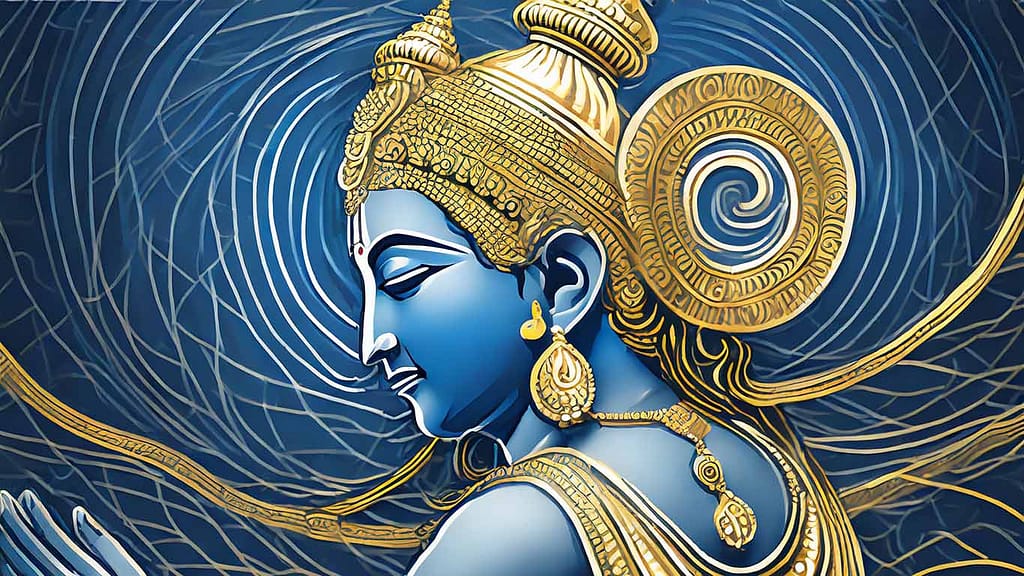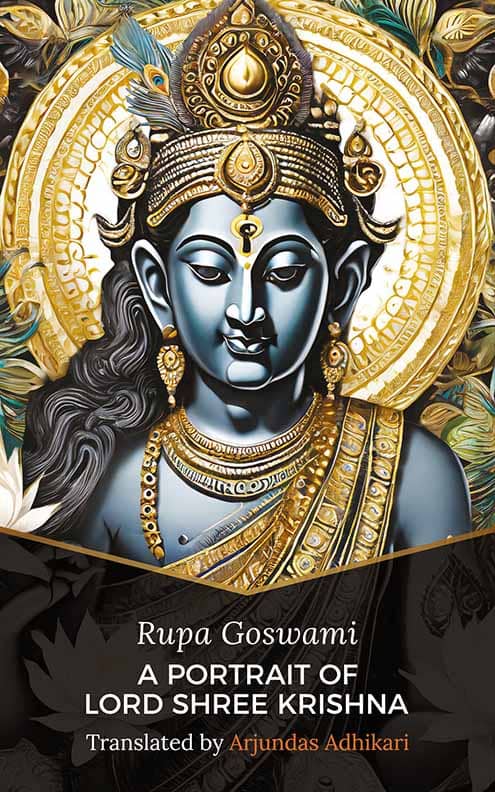I would like to express my deep thanks to a dear colleague and friend from Glastonbury, who was also a Hare Krishna monk for many years, and who went on to study Sanskrit, Bengali, and Odian in Odisha for many years, expressly to properly understand the manuscripts and commentaries on Rupa Goswami’s two dramas – Vidagdha Madhava and Lalita Madhava. His insistence on meticulous accuracy and precision in translating the Vidagdha Madhava has been invaluable. Thank you, Jagannath, amigo!
A Portrait of Lord Shree Krishna by Rupa Goswami was a long time in the making – over three years. The lockdown gave me an opportunity to get my head down and finish it off, mostly in my camper van, so I could focus, inspired by innumerable coffees, but particularly inspired by the thrill of meeting all the beautiful, conflicted, heart-melting, funny characters of the play, and discovering the crazy stuff they get up to. Everything had to be checked, double-checked and triple-checked, and btw, the rhyming couplets I’ve written in, reflect the rhythm of the original manuscript, which is teeming with poetic Sanskrit verses in different meters. I should add that not all the dialogue of Rupa Goswami’s Vidagdha Madhava is in Sanskrit. The dialogue of the characters of rank is in Sanskrit, whereas the majority of the dialogue of others (but not all) is in a sort of colloquial Sanskrit called prakrit. To find out the English meaning of the prakrit dialogue also depends on having access to an original MS of this great Hindu drama to hand, where there is invariably a Sanskrit equivalent for each prakrit line.
When working with the original Sanskrit text of Vidagdha Madhava by Rupa Goswami, what dawns on you as you proceed, especially when informed by the commentaries on it in companion guides such as the one written by Vishvanatha Chakravartin, is that every line, every word, and every stage direction is part and parcel of a fully integrated, fully operational, character-driven narrative. Every line is directly related to the line before it, or to what has transpired, or is transpiring.
What is concerning is how little you can rely on transliterations of Vidagdha Madhava into English, that is to say where the Sanskrit is supposedly rendered into English script. Among the most common errors are: assigning incorrect stresses to transliterated vowels, unnecessary additions of exclamation marks, sentences being divided incorrectly, and the blatant transliteration of one Sanskrit word or letter into the wrong English equivalent. For instance, there are two kinds of Sanskrit letters for “d”, “t” and “sh”, and three kinds of Sanskrit letters for “n”, depending on their respective pronunciations. Just the incorrect English transliteration of a letter could well mean the complete change of a word’s meaning. A hapless translator with no recourse to anything but a transliteration would desperately try and fit what they believe to be the correct word into the dialogue, and the consequent dialogue would turn out more and more absurd. I have encountered such curious translations and their incoherence (like something from the Theatre of the Absurd). Passing such efforts off as testimonies to the “incomprehensible nature of divine exchange” is a bit rich, if you ask me. The disobliging term for this kind of distortion of a literary work is called rasa-bhas, in Sanskrit. It means ‘braying like a proverbial.’


